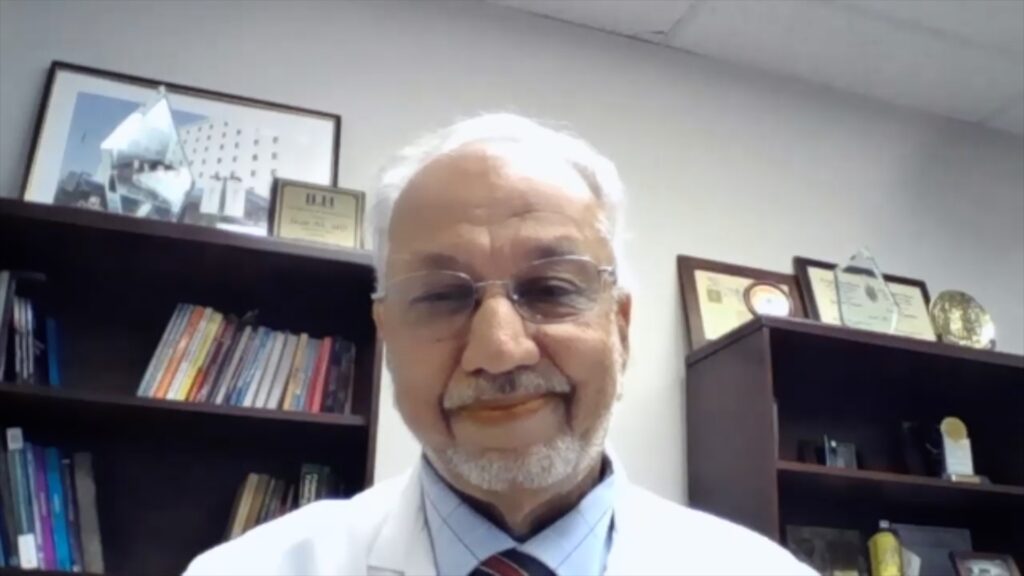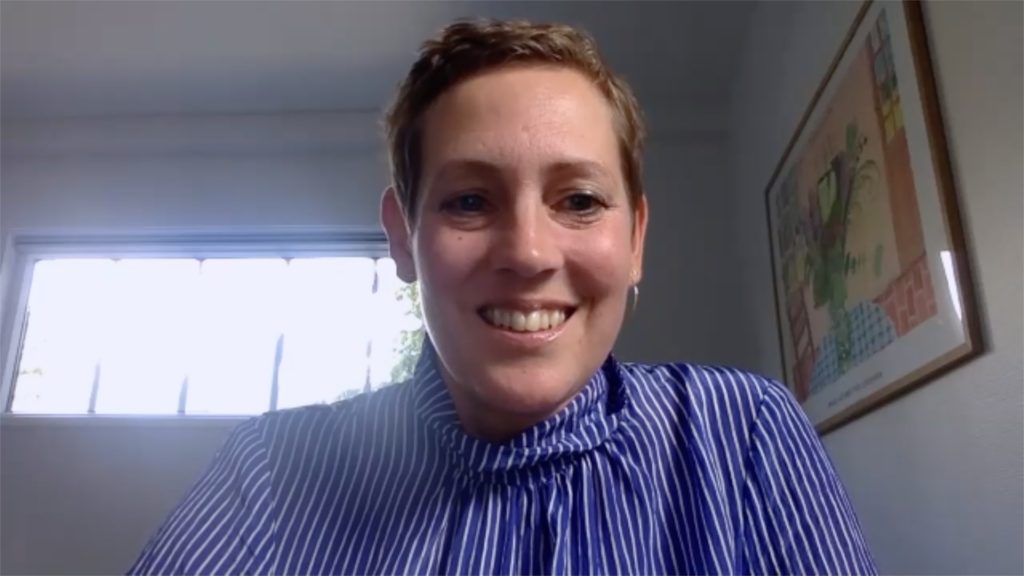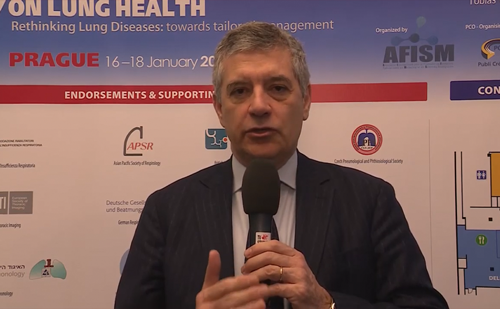 As winter takes hold, the World Health Organisation (WHO) has begun sharing updates on pathogens and their impact across the Northern Hemisphere.1 This time of year is marked by a significant rise in acute respiratory infections (ARIs) and other common respiratory illnesses. These infections are often exacerbated by colder, drier air and an increase in indoor social gatherings, creating ideal conditions for the spread of winter pathogens.2 Seasonal epidemics, such as those caused by influenza, respiratory syncytial virus (RSV), human metapneumovirus (hMPV) and mycoplasma pneumoniae, have been a significant focus in recent weeks.
As winter takes hold, the World Health Organisation (WHO) has begun sharing updates on pathogens and their impact across the Northern Hemisphere.1 This time of year is marked by a significant rise in acute respiratory infections (ARIs) and other common respiratory illnesses. These infections are often exacerbated by colder, drier air and an increase in indoor social gatherings, creating ideal conditions for the spread of winter pathogens.2 Seasonal epidemics, such as those caused by influenza, respiratory syncytial virus (RSV), human metapneumovirus (hMPV) and mycoplasma pneumoniae, have been a significant focus in recent weeks.
As anticipated, seasonal patterns have led to an uptick in influenza-like illness (ILI) and ARI rates, surpassing baseline levels. Influenza has been particularly prevalent, with both seasonal strains and subtypes circulating across various regions. In Europe, Central America, the Caribbean, Western and Central Africa, and parts of Asia, influenza positivity rates range from 11–20% to more than 30% in some areas.3 This indicates a substantial rise in influenza infections compared to baseline levels.1
RSV is a leading cause of ARIs globally, significantly affecting children and vulnerable populations.4 This winter, RSV activity has fluctuated, with decreases observed in subregions of the Americas, while North American data shows an increase in cases.1 Europe has also reported a recent decline in RSV infections, which is consistent with typical seasonal trends. RSV remains a significant concern, particularly as it leads to hospitalizations and complications in young children and the elderly.
The WHO has highlighted the increase in cases of hMPV, which typically circulates during this time of year.1 This pathogen affects people by causing upper and lower respiratory disease.5 The pathogen has been reported in several regions, including parts of the Americas and Europe. In addition, mycoplasma pneumoniae, a common cause of pneumonia, has been observed with rising frequency in children aged 5–14, particularly in China. It is crucial to note that while the overall rate of SARS-CoV-2 infections remains low, the XDV variant has recently dominated detections in certain regions.
China has drawn international attention due to the rising respiratory infections, particularly hMPV.1 Concerns have been raised about overwhelmed hospitals, although Chinese authorities have denied such claims to the WHO and the public. According to the China CDC, the current trends in influenza, RSV, and hMPV align with typical winter patterns.6 However, the WHO has been concerned about the pressures faced by healthcare systems as these infections continue to rise within China.1
Globally, health agencies have been working tirelessly to manage the situation. In the UK7, for example, a new programme has been launched to provide RSV vaccinations to protect vulnerable populations, including the elderly, pregnant women, newborns and infants. This intervention aims to reduce the impact of RSV and prevent hospitalisations in high-risk groups.8
In response to the increasing number of respiratory infections, the WHO has issued several recommendations to prevent the spread of these pathogens.1 Individuals experiencing symptoms should stay home, avoid contact with others, and prioritise rest. For those with severe symptoms or at high risk, seeking medical attention is strongly advised. The WHO also encourages the use of masks in public spaces, particularly when coughing or sneezing, to prevent airborne transmission of pathogens. Good hygiene practices, including frequent handwashing, are essential in reducing the spread of infections.
Despite efforts to control the spread of respiratory infections, the WHO stresses the importance of continued vigilance and surveillance. Integrated surveillance systems should be in place to ensure healthcare providers remain informed about the spread of respiratory pathogens. By staying informed, healthcare facilities can better manage the influx of patients and prevent system overloads.
As winter progresses, respiratory infections are expected to continue circulating at elevated rates across the Northern Hemisphere. Influenza, RSV, hMPV and mycoplasma pneumoniae are among the key pathogens contributing to this seasonal surge. Governments and public health agencies have been working proactively to manage the impact of these infections, with vaccination programmes and public health measures playing a crucial role in curbing the spread. However, individuals must remain vigilant by following recommended prevention guidelines, ensuring the continued protection of vulnerable populations and healthcare systems.
References:
- World Health Organisation. Trends of acute respiratory infection, including human metapneumovirus, in the Northern Hemisphere. 2025. Available at: www.who.int/emergencies/disease-outbreak-news/item/2025-DON550 (accessed 27 January 2025).
- NIH MedlinePlus Magazine. Winter viruses. 2024. Available at: https://magazine.medlineplus.gov/article/winter-viruses#:~:text=While%20a%20cold%2C% 20flu%2C%20or,to%20spread%20in%20large%20numbers (accessed 27 January 2025)..
- World Health Organisation. Influenza Update N° 508. 2024. Available at: www.who.int/publications/m/item/influenza-update-n–508 (accessed 27 January 2025).
- American Lung Association. Learn about respiratory syncytial virus (RSV). Available at: www.lung.org/lung-health-diseases/lung-disease-lookup/rsv/learn-about-rsv (accessed 27 January 2025).
- CDC. About Human Metapneumovirus. Available at: www.cdc.gov/human-metapneumovirus/about/index.html (accessed 27 January 2025).
- Chinese Center for Disease Control and Prevention. Weekly influenza surveillance report. Available at: www.chinacdc.cn/jksj/jksj04_14249/ (accessed 27 January 2025).
- UK Health Security Agency. Respiratory syncytial virus (RSV) vaccination programme. GOV.UK; 2024. Available from: https://www.gov.uk/government/collections/respiratory-syncytial-virus-rsv-vaccination-programme. Accessed 29 January 2025.
- GOV.UK. National RSV vaccination programme announced. [Press release]. 2024. Available at: www.gov.uk/government/news/national-rsv-vaccination-programme-announced#:~:text=The%20UK%20is%20the%20first,mild%2C%20cold%2Dlike%20symptoms (accessed 27 January 2025).
Disclosures: This article was created by the touchRESPIRATORY team utilizing AI as an editorial tool (ChatGPT (GPT-4o) [Large language model]. https://chat.openai.com/chat.) The content was developed and edited by human editors. No funding was received in the publication of this article.
Acknowledgements: Editorial assistance was provided by Joey Heywood at Touch Medical Media.
SIGN UP to touchRESPIRATORY!
Join our global community today for access to thousands of peer-reviewed articles, expert insights, and learn-on-the-go education across 150+ specialties, plus concise email updates and newsletters so you never miss out.













